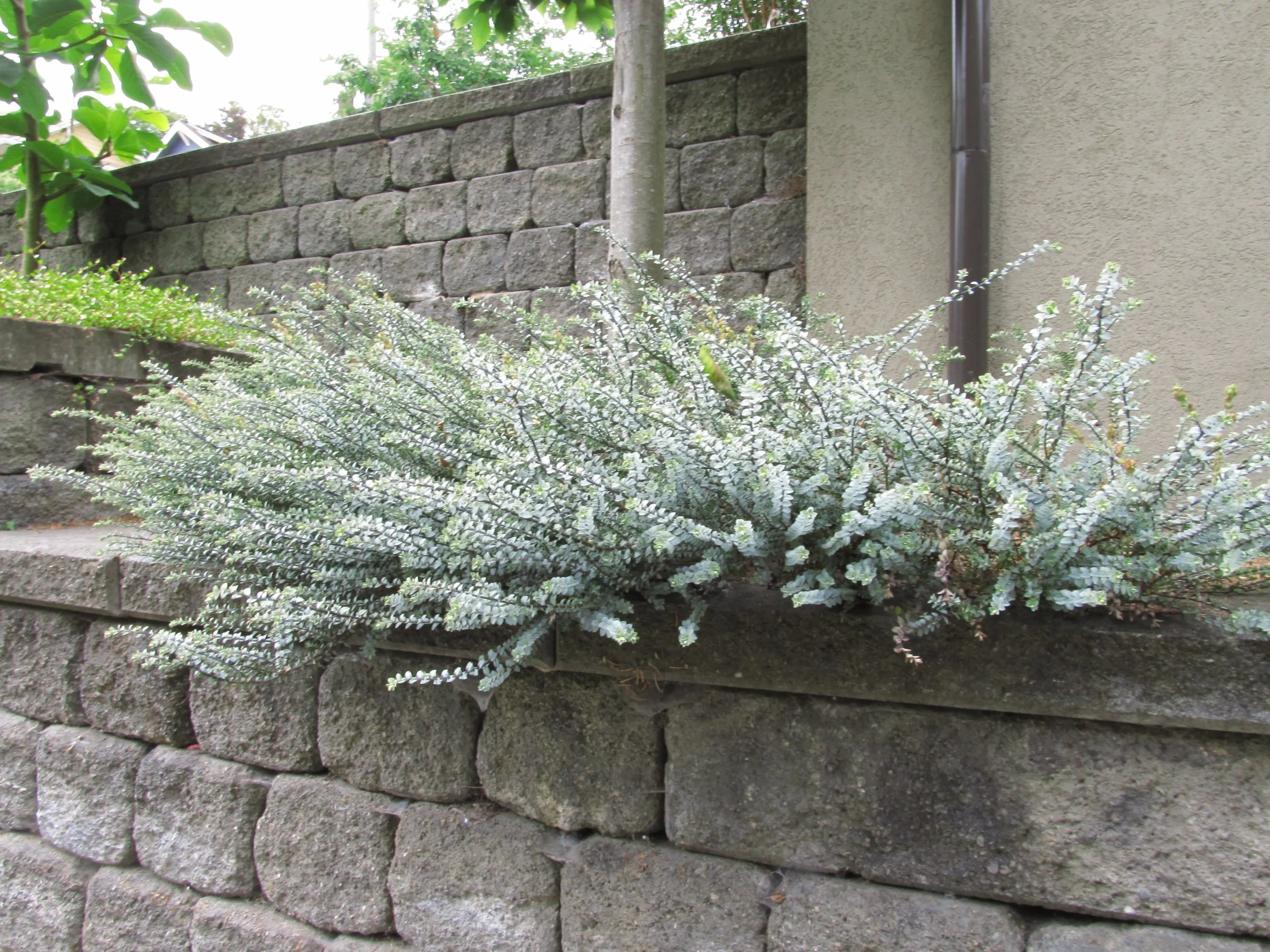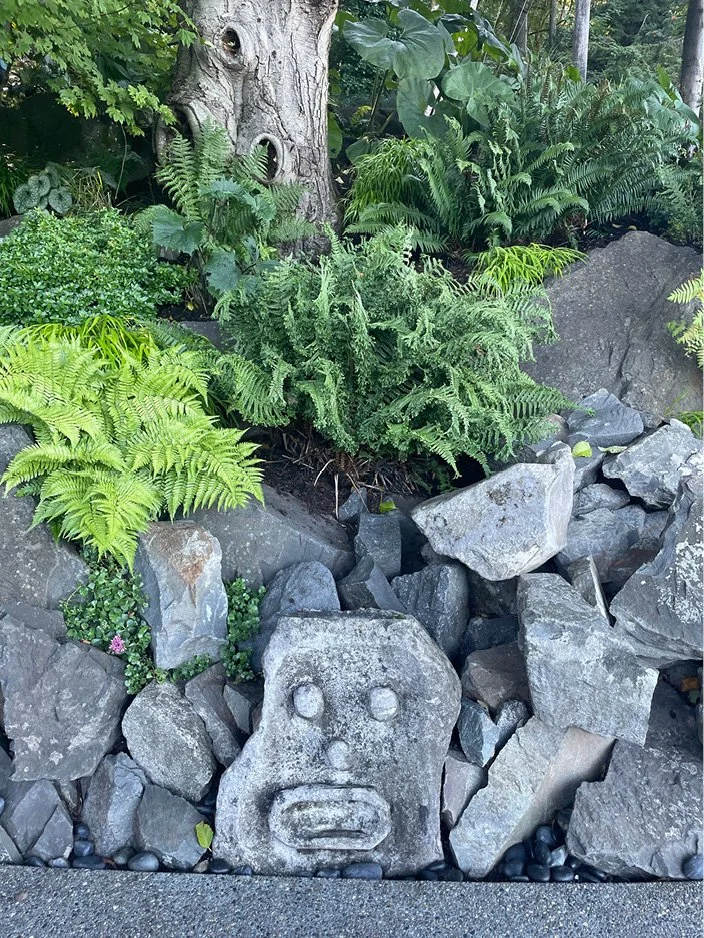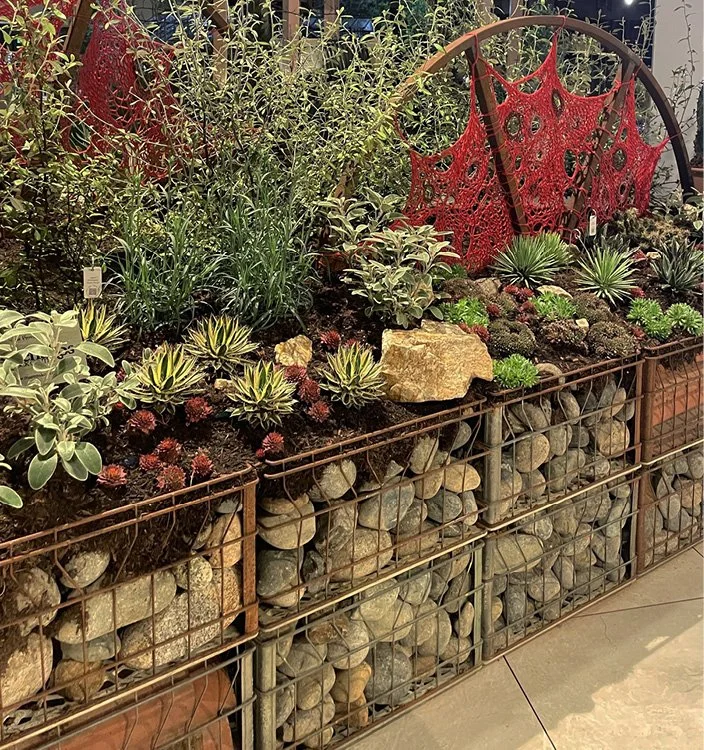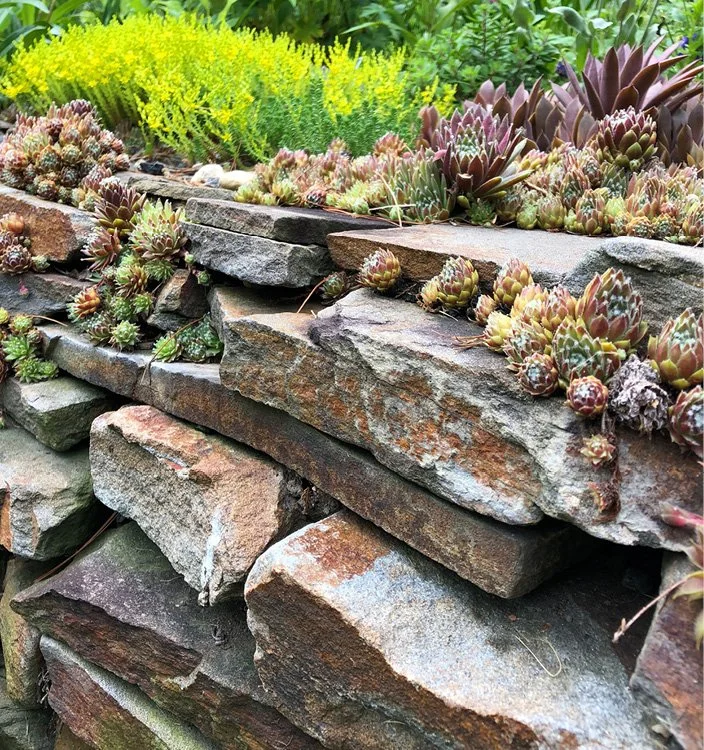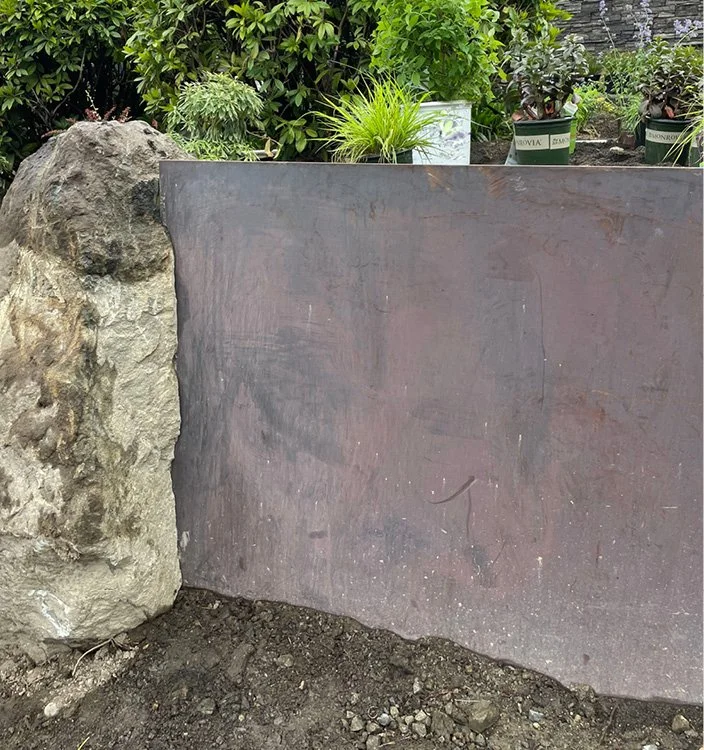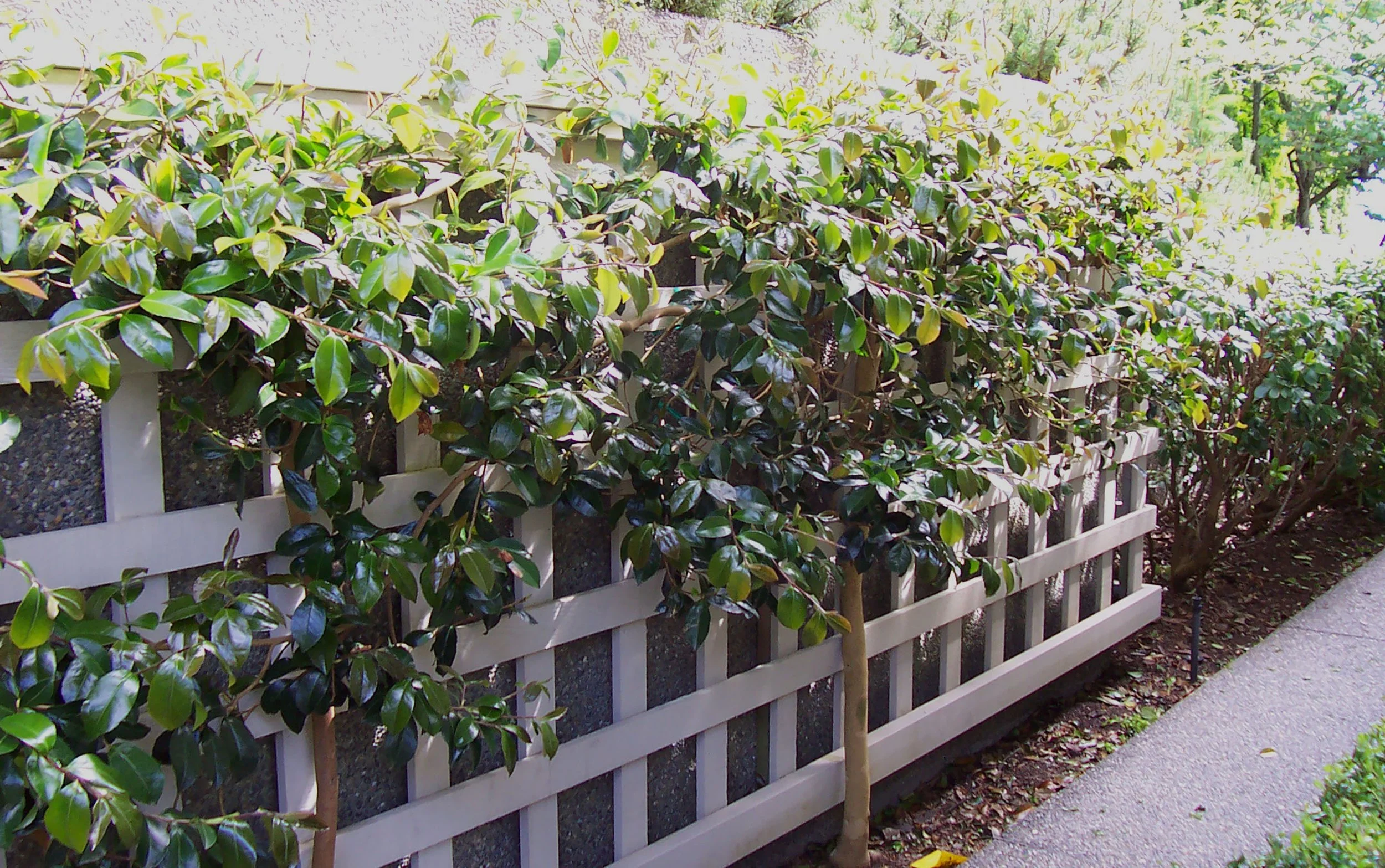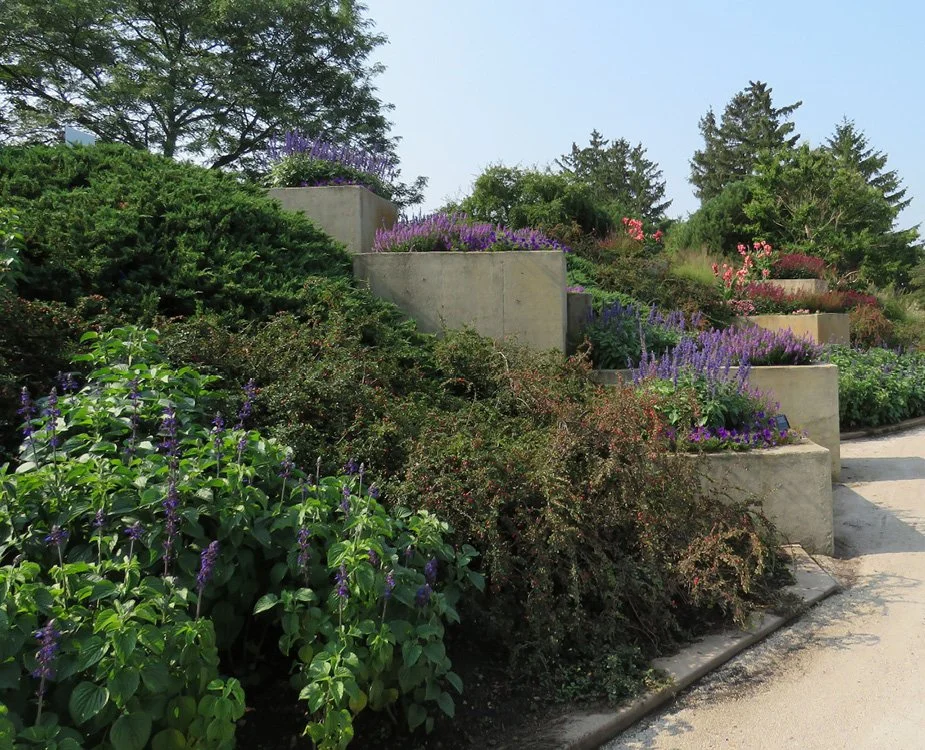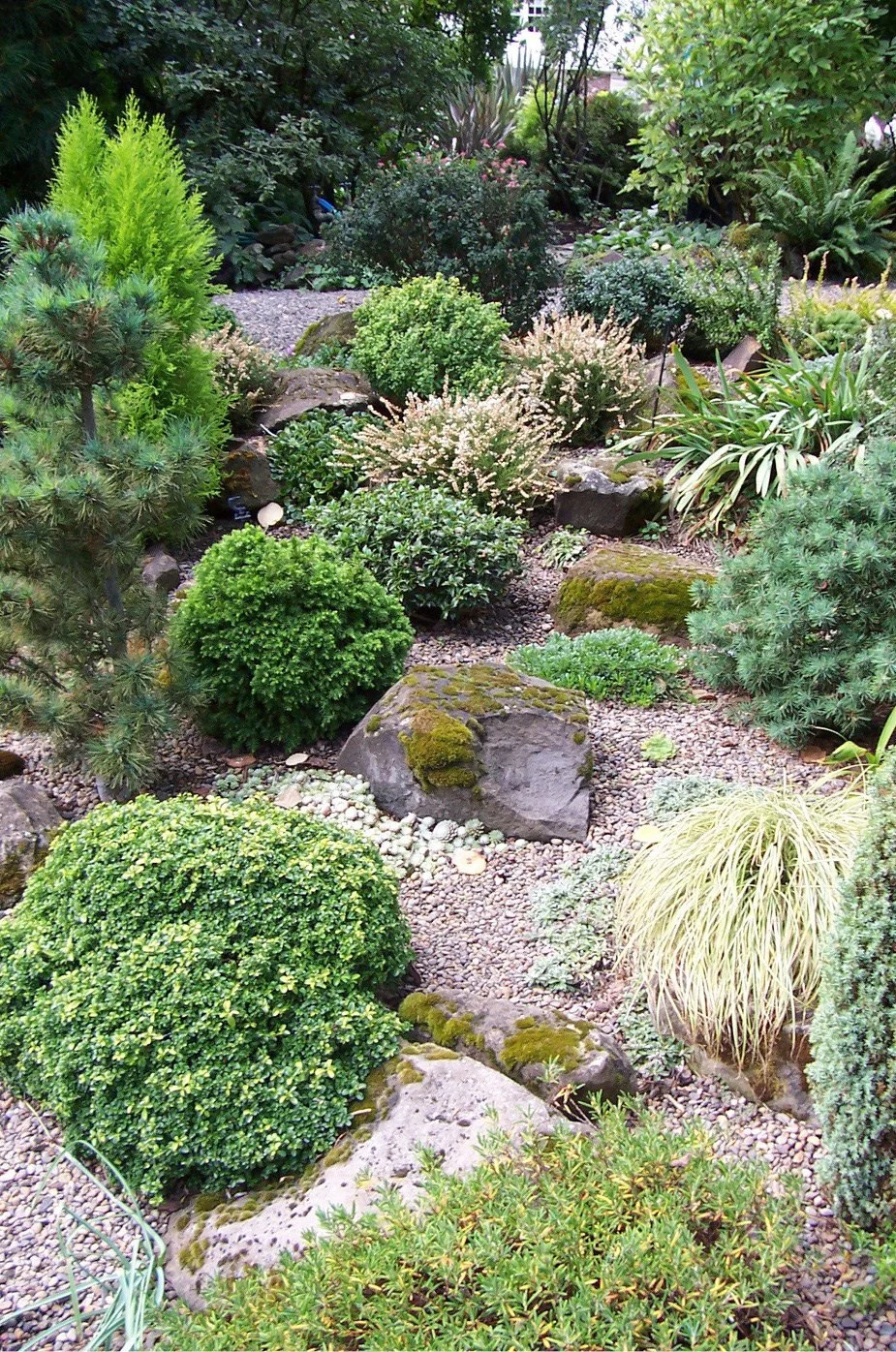What is the Value of the Wall?
By Sue Goetz
Common Segmented Retaining Wall used in terracing
This is a question I often consider when a client asks me if they need or want a retaining wall in their landscape. I weigh both practical needs and aesthetic wants. A typical manufactured SRW (segmented retaining wall) isn't always necessary—creative alternatives can often stabilize a slope or make it visually appealing. But when it is needed, its value becomes clear.
Need
If a slope is unstable or is likely to become unstable when the landscape is redefined, a retaining wall provides the necessary functional support. Look closely at vital aspects, such as preventing soil from washing away downslopes or hillsides. A wall also provides a support system for driveways, patios, and other structures when soil needs to be retained in place due to an elevation change. Another need may also be to manage water runoff and protect foundations. Directing or slowing stormwater and rain event management can also be the work of a retaining wall system. Other factors that make it a "need" to take into account include areas with a slope greater than 2:1 (rise:run) and spaces where grade changes create an unstable or unusable area. These infrastructure needs are not as romantic to talk about as a want, but thinking through them creatively will help get the client excited about this big-ticket item on their budget.
A natural, large boulder wall is the right aesthetic to help reclaim this space damaged by construction. Our primary focus was also to avoid damaging that fabulous madrona tree and restore a natural appeal.
Want
What the client wants is typically where the value is realized. They want to reclaim space that is currently on a slope. Walls are a way to create flat, usable spaces for seating areas and garden spaces. In some cases, it can increase the property's value by making the usable portion of the property larger, user-friendly, and more manageable. When talking to clients, it is beneficial to take a design perspective first. The reason I take a 'design perspective' is that the logistics of slope, grade, etc., are not the primary focus of the conversation - those will be figured out once all the variables of wants and needs are decided upon. Slope retention will be a significant expense, and a topic for discussion is its numerous benefits.
Design Notes
Terracing. Multilevel terraces are good for managing steep sites by breaking up steep slopes into multiple levels, adding visual and dimensional interest to the landscape. Consider the view from both the top and bottom and design accordingly.
Patio Surrounds. Walls can be used to define outdoor rooms and serve as seating walls or to give a patio a "sunken" feel by surrounding it and adding a walled feel to the space.
Creative Retention.
This creative wall inspired me during a garden tour in Tacoma, Washington. It is the perfect match for the homeowners who collect art.
Gabions. Wire baskets filled with rock or stone. The weight of the rock held together by the metal baskets is the weight mass that creates the "wall" and holds back the slope. Naturalistic and interesting.
A unique and fun gabion retaining wall built by Relish Gardens at the 2025 Northwest Flower & Garden Festival.
Landscape boulders and dry-stack walls. The weight of the boulders is the trick to making these work. The weight of stacking and interlocking large natural boulders makes highly stable walls popular for natural bulkheads, allowing marine life to thrive in the crevices. Of course, check shoreline regulations in your area.
Vertical plank or metal sheet walls. Sheets of metal can be used not only as a decorative modern wall but are also particularly useful for narrow spaces - they only take up inches. In contrast, block walls can occupy valuable planting spaces.
A new installation is in progress, May 2025, using a custom-made Corten steel wall. A groove was carved into the rock to blend the steel and the rock.
Living walls. Combine structure and plants. Nice for low walls, interesting walls along pathways.
Planters, especially steel. Use strategically to hold minor slopes and create raised planting beds as the base. The trick is to use metal or strong materials that will not break down easily and fill the planters with weight to help them stay in place.
Large Concrete planters set in a hillside at Ball Horticultural in Chicago, Illinois.
Plants as Slope Retainers.
Slope retention with a combination of dwarf evergreens and rockery for an alpine effect. The entire area is top-dressed with pea gravel mixed with sedums.
When choosing plants for a slope, think of layers and texture! The steepness or boring look of a slope can be altered simply by using a mix of shrubs, ornamental grasses, perennials, and ground covers. The mix can be beautiful and functional. Divide larger slopes into zones. Zone planting (top, mid, and bottom) ensures the right plants are in the right place. For example, the top of the slope may require drought-tolerant and wind-resistant plants, while those at the bottom may be in more shaded areas or have access to water at lower levels. Stagger plants in rows to slow runoff and erosion. Use jute netting or biodegradable erosion fabric to help hold the soil as young plant roots establish. Use drip irrigation or soaker hoses, along with low-water-use plantings, to help control water runoff. A thick layer of mulch, such as arborist wood chips, helps retain moisture and slow erosion in sandy soils. Another significant benefit of wood chips is that they slowly decompose, improving soil structure and promoting microbial activity. Avoid fine bark-type mulches, as they can lead to runoff in rain events.
So, What's the Value?
For clients, it's about usable space and beauty. For designers, it's an opportunity to shape the land into something functional and inspiring.
Sue Goetz, CPH, ecoPro, is a designer based in Tacoma, Washington, and a member of APLDWA.

